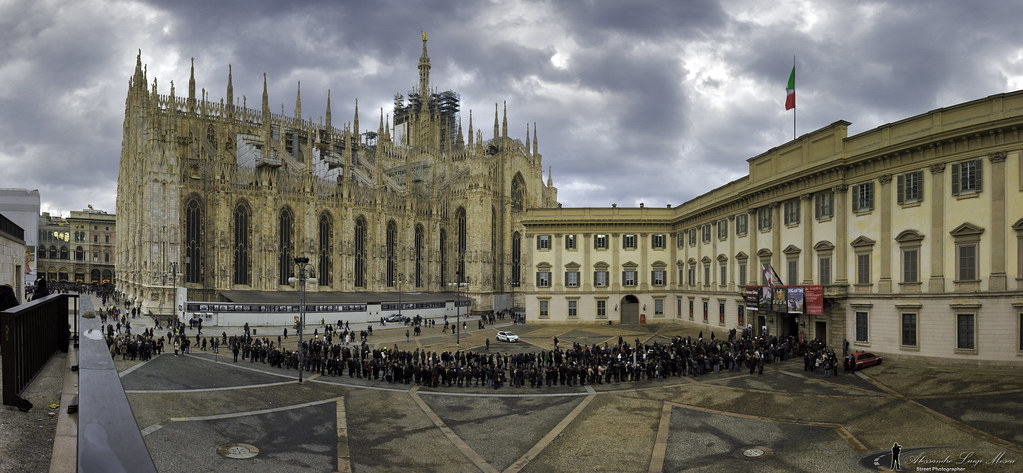



The Royal Palace of Milan was for many centuries the seat of the government of the city of Milan, of the Kingdom of Lombardy-Venetia and then a royal residence until 1919, when it was acquired in the state property becoming the seat of exhibitions and exhibitions.

Originally designed with a system of two courtyards, then partially demolished to make room for the Duomo, the building is located to the right of the facade of the cathedral opposite the Galleria Vittorio Emanuele II.

The facade of the building, following the line of the ancient courtyard, forms a recess with respect to the Piazza del Duomo, called the royal square.
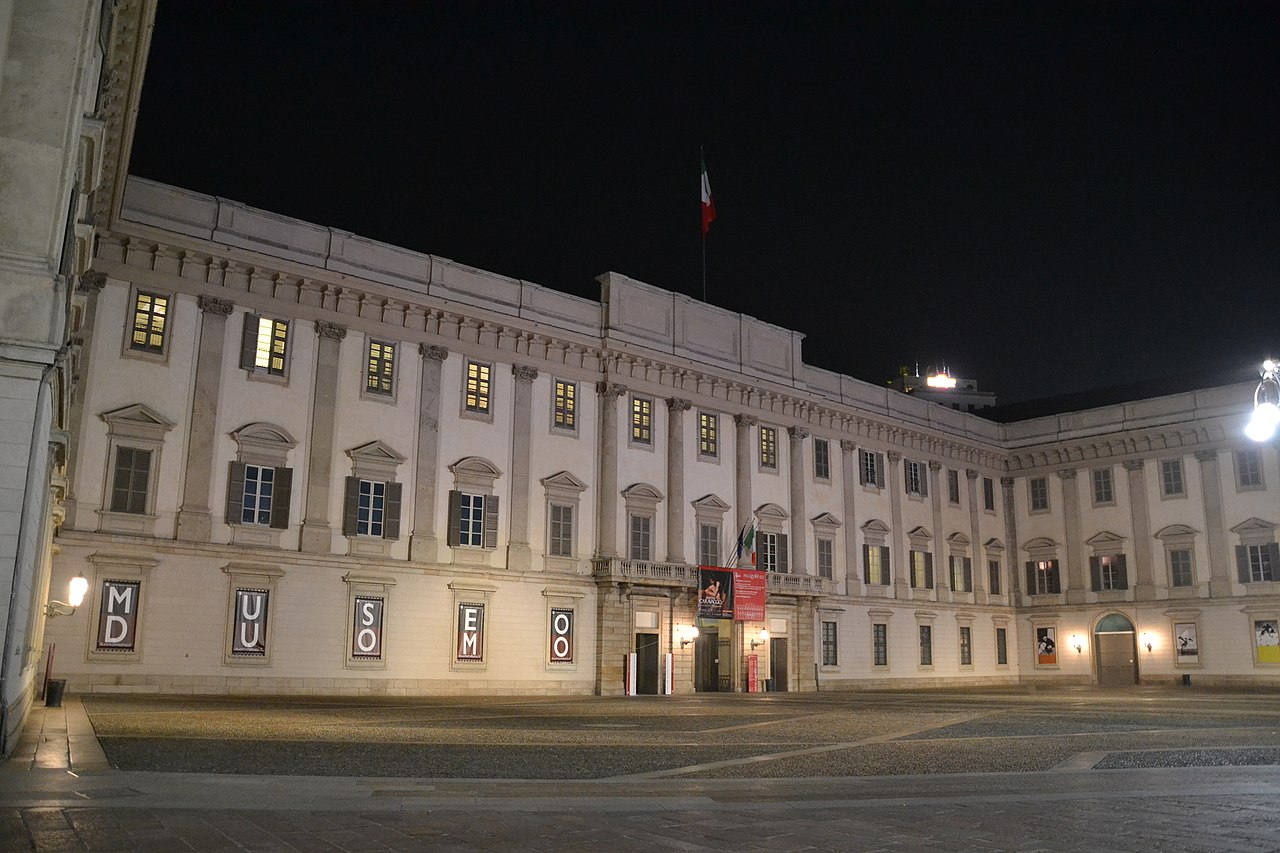
Towards the Renaissance court
With the Visconti, the Palazzo acquires imposing dimensions and a magnificence that anticipates the Renaissance courts. Giotto is also called to court.
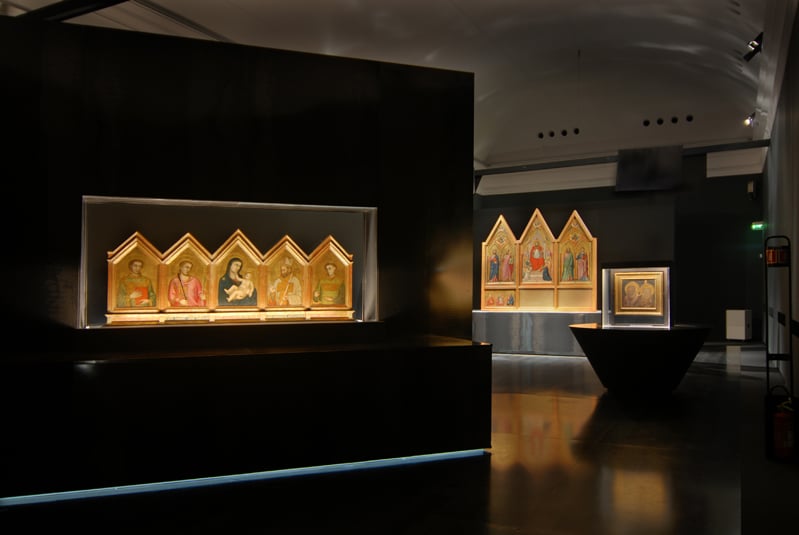
The first renovation
In 1535 the new Spanish governors settled in the Doge's Palace where they undertook major renovation and expansion works, including the construction inside of the first theater in Milan (1594), which will survive until 1776, the year in which it was decided to demolition and simultaneous construction of the current famous Teatro alla Scala.

The renovation of the furnishings and the Piermarini project
It will be the Austrians, who took over the government of the city from the Spaniards in the second half of the 18th century, to organize the renovation of the palace, internally but also externally, in the forms that we can see even today.

The furnishings are completely renovated, the internal courtyard is made less gloomy and the Church of San Gottardo with its bell tower is incorporated as the Royal Ducal Chapel. On the main floor, the Salone dei Festini and the Audience Halls are restored, then united in the imposing Sala delle Cariatidi, and a Salle à manger is created, intended for gala lunches and dinners, according to the French fashion of the time and today used as a exhibition hall.
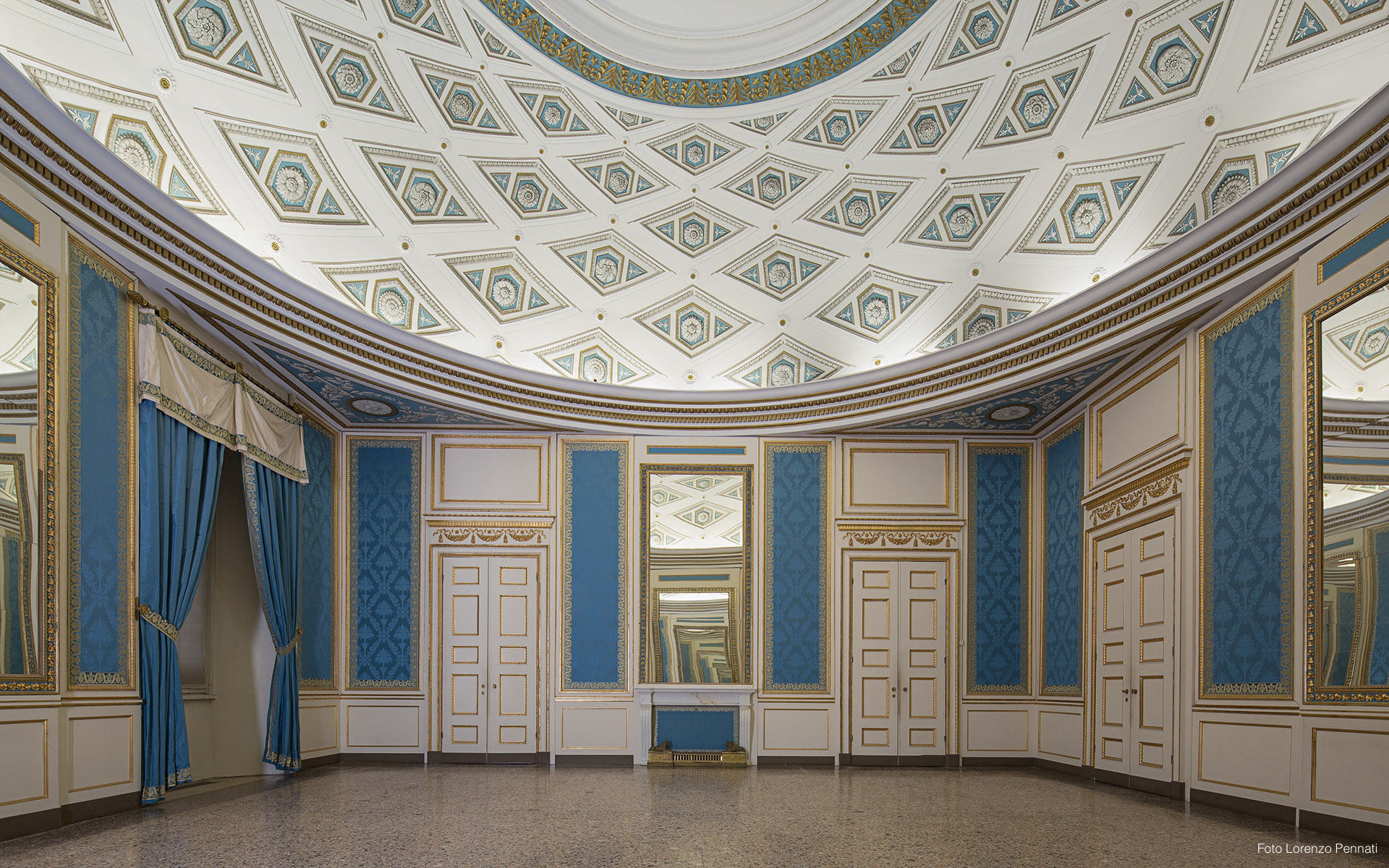
In 1769 Firmian, governor general of Austrian Lombardy, called the architect Vanvitelli, an Italian painter and architect of Dutch origin who had already built the Royal Palace of Caserta, to build a palace worthy of the prestige of the Habsburgs in Milan as well.

Vanvitelli proposes the demolition of the entire building and the construction of a new Palace, but Vienna does not want to face the heavy economic commitment and asks his pupil Giuseppe Piermarini to think of a cheaper solution. With Piermarini's work, all architectural evidence of Lombard art disappears and the whole building takes on the neoclassical guise: in eight years, from 1770 to 1778, Piermarini's work was completed and the Palace became the home of rulers.
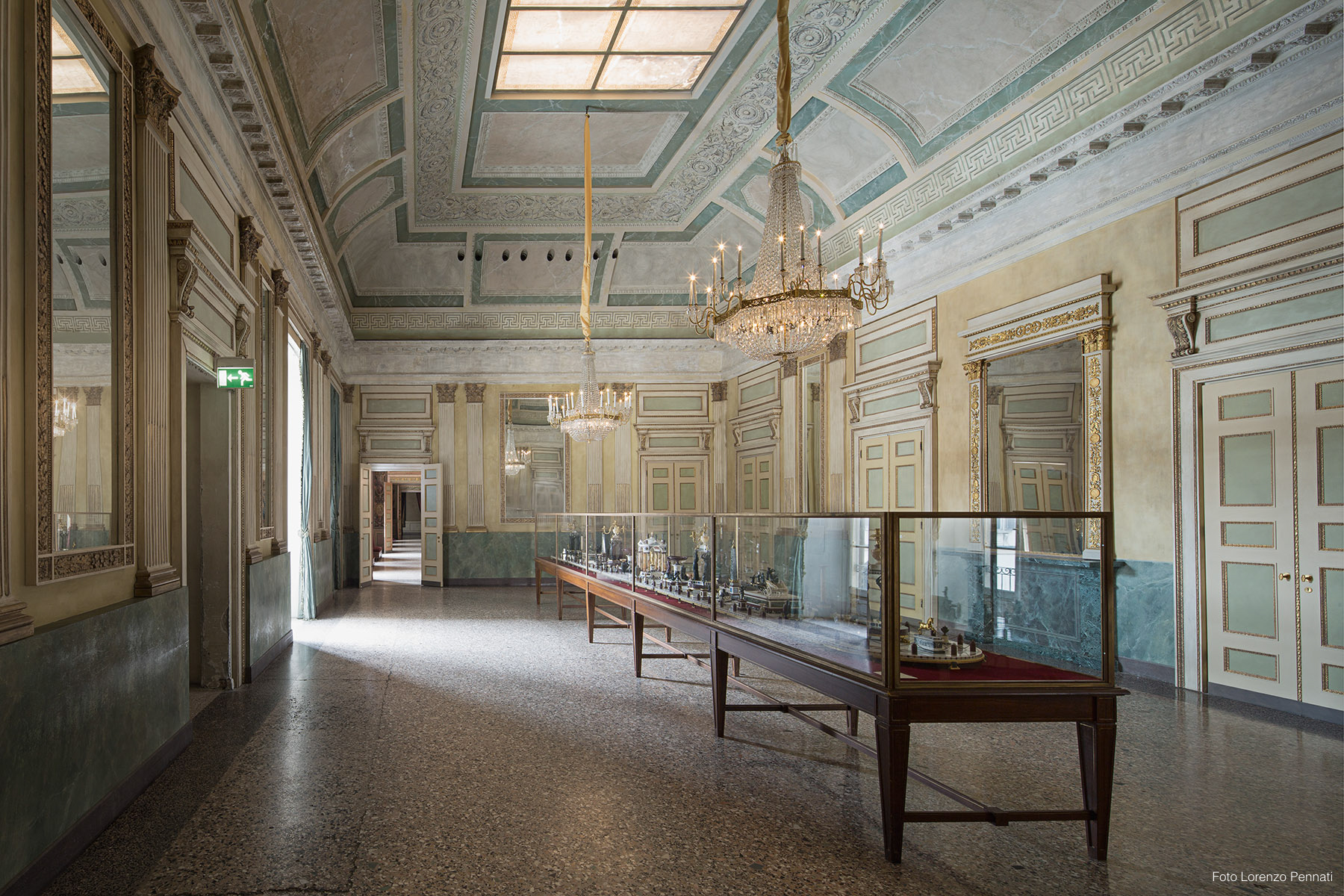
Piermarini transforms the palace into a neoclassical palace, demolishing the entrance wing, reducing the main courtyard to an open square and rebuilding the facade. With this new look, the palace overlooks Piazza Duomo and the current Piazzetta Reale is born. Piermarini realizes the Grand Staircase leading to the main floor and enriches a series of rooms with the help of the major artists, painters and decorators active in Milan: Martino Knoller, Traballesi, Giocondo Albertolli and Giuseppe Maggiolini.
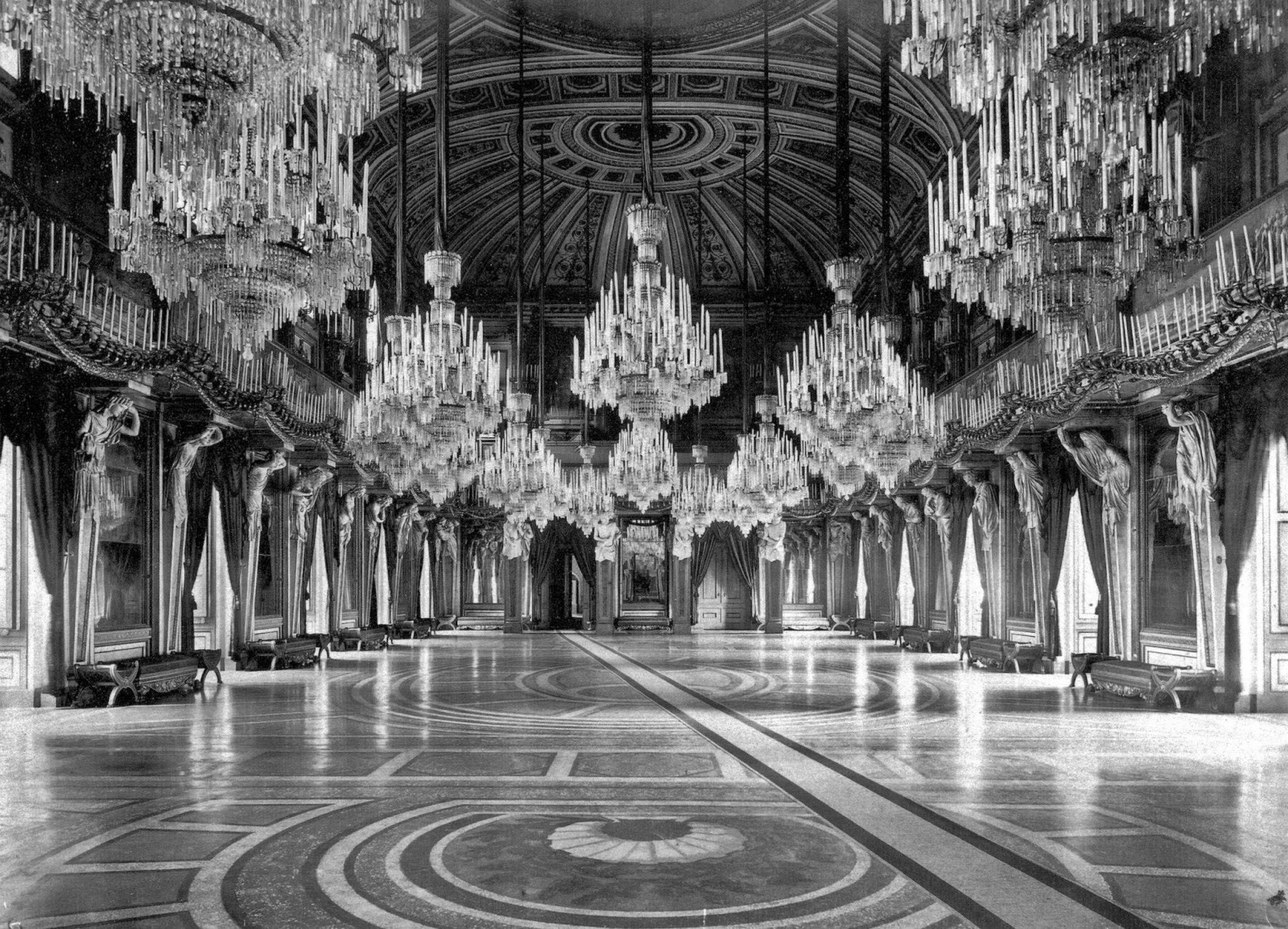
The maximum splendor
During the Napoleonic era the Palazzo reached its peak of splendor thanks to the decorations by Appiani and the building interventions of the Canonica and Tazzini The Austrians, who returned to Milan after the Congress of Vienna, continued the work of embellishing the Royal Palace thanks to the mastery of Francesco Hayez and Pelagio Pelagi.
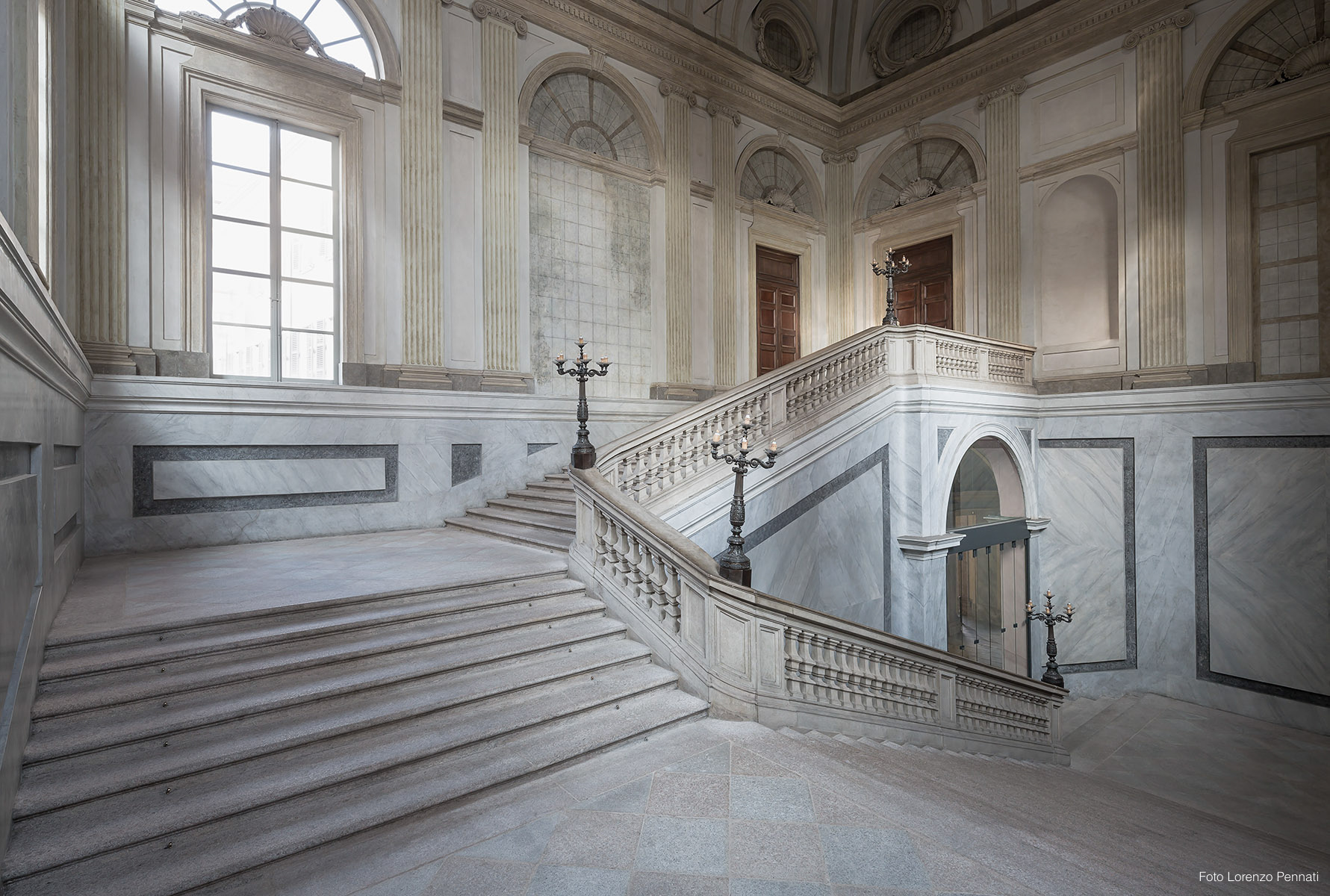
The restorations
The twenty-year recovery and restoration projects started in 1980 and followed by the architect Alberico B. Belgiojoso, in 2008 returned to the public the rooms belonging to the neoclassical period and the 12 rooms of the old Apartment of the Princes thanks to the commitment of the Municipality of Milan. of the Cariplo Foundation and the collaboration of the Superintendence of Architectural and Landscape Heritage of Milan.

TIMETABLES
Mon: 2.30pm - 7.30pm
Tue: 09:30 - 19:30
Wed: 09:30 - 19:30
Thu: 09:30 - 22:30
Fri: 09:30 - 19:30
Sat: 09:30 - 22:30
Sun: 09:30 - 19:30
Last admission one hour before closing.

HOLIDAY HOURS
Sunday 1st April 9.30am - 7.30pm
Monday 2 April 9:30 am - 7:30 pm
Wednesday 25 April 9:30 am - 7:30 pm
Monday 30 April 9:30 am - 7:30 pm
Tuesday 1st May 9:30 am - 7:30 pm
Saturday 2 June 9:30 am - 7:30 pm
Wednesday 15 August 9:30 - 19:30
Last admission one hour before closing.

Of particular importance is the Sala delle Cariatidi on the noble floor of the building, which occupies the site of the ancient theater burned in 1776 and is the most significant room that survived, albeit severely damaged, the heavy Anglo-American bombing in 1943; the damage caused by the incendiary clips and the violent movements of air was followed by a state of abandonment that lasted for more than two years, a fact that caused much more serious damage to the building, with the loss of most of the neoclassical interiors.

Royal Palace of Milan
Address: Piazza del Duomo, 12, 20122
Phone: 02 8846 5230
Site:
http://www.palazzorealemilano.it/Location inserted by
CHO.earth